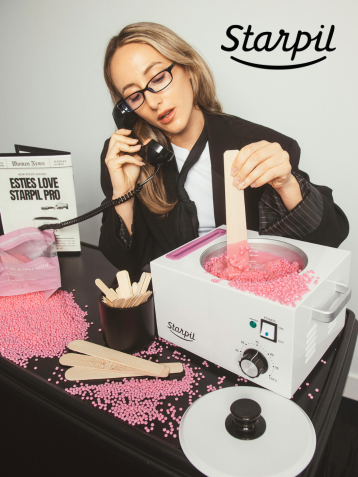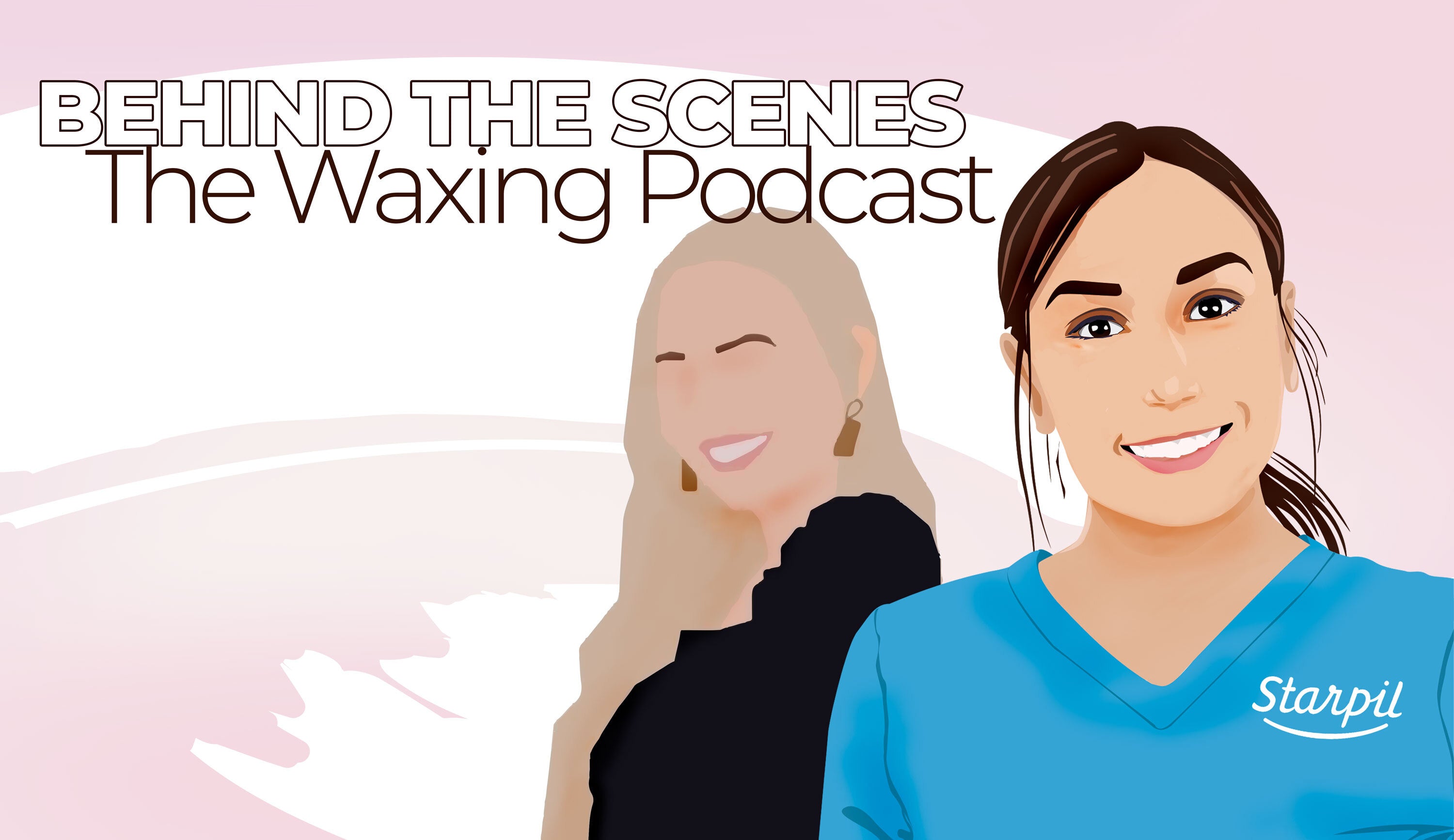How to Write Better Content for Your Beauty Business


In today's world, it doesn't seem like it's enough just to be the best wax salon or offer amazing soft or hard wax hair removal. In the digital age, getting more people onto your waxing table can mean needing to add some digital marketing, social media, and copywriting skills to your professional waxing kit.
Uff, writing, am I right? For some, writing content can seem daunting. Where to even begin creating the written content for your fliers, websites, or social media posts? How can you write to promote your business in a way that sounds natural, genuine, and effective? In this article, we'll give you a lot of great tips on how to approach writing to your clients through your marketing channels in a way that's engaging and successful in How to Write Better Content for Your Beauty Business.
What is copywriting?
If you look at the packaging of your favorite products, the "About Us" section on a wax salon website, or a company's blog, you're looking at copywriting in action. Copywriting or content writing is done with the intent to market, advertise, and sell your products or services. Your written content should be able to inform and educate as much as it is to inspire people to use your services and engage with your brand.
What is bad copywriting?
Have you ever gone to someone's website and couldn't find the information you were looking for or felt like everything you read from them was too in-your-face "salesy?" Have you looked at a brand's social media posts to see it filled with typos, grammar mistakes, and confusing verbiage? Have you ever read a blog post and wondered what the point was even about? Those are just a few of the issues many people have when writing their own copy. Your writing needs to be as thought out as your professional waxing kit, and as helpful as the hard-wax hair removal services you perform every day. Your written marketing materials should be seen as an extension of the excellent customer service you offer your clients IRL.
Writing to inform, educate and inspire
There are many things that your wax salon content writing can achieve. Of course, you want it to be reflected in your sales, and just like successful sales while clients are on your waxing table, your content needs to inform, educate, and inspire. These three things create a need and relevance for your goods and services, position you as an authority, and provide your audience/clientele with an immersive experience.
Inform
Your content needs to inform clients about your goods, services, location, credentials, and promotions while using education to draw people in and explain why your information is useful to them. Informing is the part of writing that keeps you accountable for providing everything people need to know about what you offer. Example: You inform people that you do hard wax hair removal, you educate them as to why that’s important to them.
Educate
Many people don't know how to get the results they're looking for from their wax products or technicians. Some can't pinpoint why, for example, "somethings off with my eyebrows after waxing," “why hard wax hair removal isn’t working for me,” or "how acne after waxing is happening." You can assess, anticipate, or create needs through educating your audience. By offering expert solutions within everything you write about, you draw in your followers and keep them coming back for more content (and to your waxing table).
Inspire
Any interaction with you or your brand (whether it be in-person or online) should be an experience. This is where the "you" comes in on your information and education. Inspiring comes from the genuine approach you take for clients to buy the stuff, book the services, and engage with your brand. Inspiring your audience is akin to that spark that happens when you're simply sharing why you like pink wax for facial hair removal or Starpil Blue Soft Strip Wax for leg waxing to a friend. It’s the trust that clients have when buying a product or using a technique recommendation from you. It's the reason people stay loyal to your business, and it should be all over your writing.

WATCH: An Esthetician’s Journey, a YouTube series from Starpil Wax
Three rules for beauty copywriting
When informing, educating, and inspiring through online content, there are three essential factors to consider. One, your overall message needs to speak in a way that resonates with your specific clientele, two, it needs to have all of the crucial information given upfront, and three, it needs to include everything else they need to know included within it.
Here's what we mean.
- Who are your clients?
Generally, like attracts like. In a lot of cases, you might find that your clients are a lot like you. But for whatever reason, if you find that your clients are in a younger age bracket or you cater to a lot of men, the content you write should be tailored to that specific audience. If you're trying to go more general, think of your primary audience as being dedicated to hair removal and skin care services. Your secondary audience can be those who are curious about such things.
Always consider who your clients are, what they do, how old they are, their goals, and how they choose to spend their time and money—defining who your clients are, allows you to speak to them in the form of solutions that meet their specific needs.
READ: How to Deal with Challenging Clients
- Don't save the best for last
Whether it's your website, a social post or a blog, always put the most attention-grabbing content at the top. Many people are coming to your content for something specific, merely skimming through your social feeds, or only reading the beginning part of your blogs. With this in mind, you've got to pack the most attention-grabbing points upfront to keep them engaged, or so they leave with the most pertinent information.
Take this blog, for example, from the first paragraph it starts with the ascertaining a need or commenting on a common issue or concern many esthies face ("we've gotta be writers now, too?). Then I move on to where writing is essential to your marketing content and immediately share how this article is going to help you be a better writer to enhance your business. It's all in the first paragraph, so it doesn't leave you searching for the point or what the article aims to do. The same goes for your website, email blasts, or social posts, start with the biggest news first, then add the gravy.
- What it is, what it does, why you need it
There is a difference in saying, "Starpil Blue Soft Strip Wax is the best wax for a flawless leg waxing," and "Starpil Blue Soft Strip Wax is an ultra-pliable soft strip wax that can be spread over larger areas to remove hair without breaking or cracking. Its formula is made with blue azulene to grab even the finest hairs while being gentle, cooling, and calming on sensitive skin and intimate waxing areas." You've got to mention what it is you're talking about, what it does and why someone needs it in their life.
Take your service menu, for example. You may assume that everyone knows what a Brazilian wax service is, but the more information you include in your service description, the more likely people who are new to hair removal will book with you. Be as detailed about everything as you can while still being concise.
Using Starpil Blue Soft Strip Wax as an example:
What it is: "an ultra-pliable soft wax."
What it does: "can be spread over larger areas to remove hair without breaking or cracking."
Why you need it: "Its formula is made with blue azulene so it can grab even the finest hairs while being gentle, cooling and calming on sensitive skin and intimate waxing areas."
READ: What is Salon Email Marketing?
How to write the things!
Now that we've discussed a little bit about why to write, what to write, and who to write for, how do you actually put it all down? Here a few writing tips for those of us who love serving clients but have a hard time putting that same care into words. Everything you write should be well-thought-out, factual, and as free as possible from errors. Here's more on that.

The rule of threes (or fours or fives)
- Don't ever post anything flippantly or when you're doing something else. Everything you write should be done in three to four stages or passes. The first pass is where you get all of the thoughts and research onto the page. The second pass has you checking the organization of the content, and the third pass is where you edit. Anything else after that can be where you add all of the other bells and whistles like links to different products, SEO keywords, or added editing passes.
- The best way to write something is to take your time (this blog has taken over four hours and has been written over two days). It's wise to use a keyboard vs. a smartphone and to plan your posts ahead of time. Instagram Stories and Snapchats can be forgiving and great for off-the-cuff content, but your Facebook and Instagram posts, website content, or blogs need that extra care when it comes to writing.
READ: How to Create a Social Media Calendar for Your Wax Salon
Well-thought-out writing
- Begin by asking yourself or writing out questions about the product, service, or topic at-hand so that you can inform, educate, and inspire your chosen audience with the most crucial info at the beginning and everything else you can think of behind it.
- To keep the content in a well-thought-out flow, you can create an outline of the key points you want to hit or write it all out quickly so that all of the info gets out of your head and onto the page.
- As the content develops in your second pass, you can start to see it take shape. Sometimes, you’ll notice a particular thing you've said should be moved to a different part of the content to help it flow better, limit repetition, or further your points.

Factual writing
- Research and writing out what's on your mind go hand-in-hand. When asking yourself questions about the product, service, or topic of choice, Google the heck out of it. What are other people saying about this thing that you're writing about? What new info can you add to how to care for eyebrows after waxing or an ingredient in the hard wax hair removal products you use or even a quote about feeling beautiful to use on a social post. Get some facts to back up what you're saying or to give you some inspo on how to approach any given subject.
- If you mention a particular product or a celebrity's name, check to see if it's written correctly. Even if you think you know how to spell Lupita Nyong'o or say Starpil Ingrown Hair Serum (Hair Puller), double-check, it doesn't hurt.
- When writing your first pass, and want to add more to the topic later, highlight a section and in caps write, ADD MORE LATER, or RESEARCH MORE HERE, then go back later and add the new info and take out your notes.
Free from errors
Editing is a strange bird. You think you've got your message down and then you read it out loud to someone and—oops, typo, or uh-oh, that's a weird way to say that, or even the dreaded use of a dreaded word used a dreaded amount of times within dreaded proximity to each other.
- As you're writing it all down on paper on the first pass, highlight any word that you're unsure of, whether it's the spelling, context, or usage. The same goes for complete sentences. Your first pass can be far from flawless. Highlight sentences that you know sound odd and go back and rework them later.
- After you have written your content, put it through a spelling and grammar check like Grammarly.com or even Word, then read it out loud like you're trying to sound out each word so you can try to catch any errors.
- Have someone else take a look to double-check. This is important for printed materials.
Final thoughts
Writing is one thing, but copywriting for marketing purposes is a whole other ball game. Use these tips to cross-check everything you write until you find your own flow. On an added note, if you can hire a professional beauty copywriter, it's highly recommended. You can find them through websites like Upwork.com.
Do you write your own content? How do you feel your writing has improved since you started? Was there anything in this article that taught you something new? Let us know in the comments or in The World of Waxing, Starpil Wax's Facebook group of other pros like yourself!







